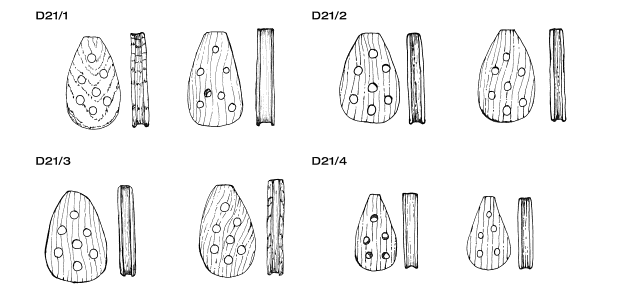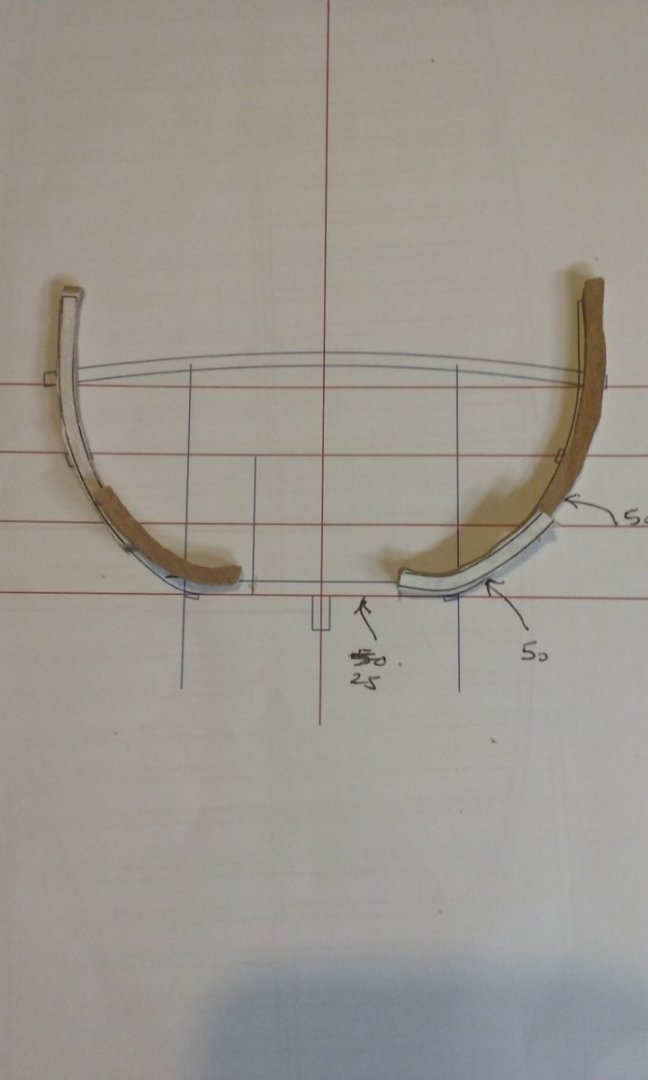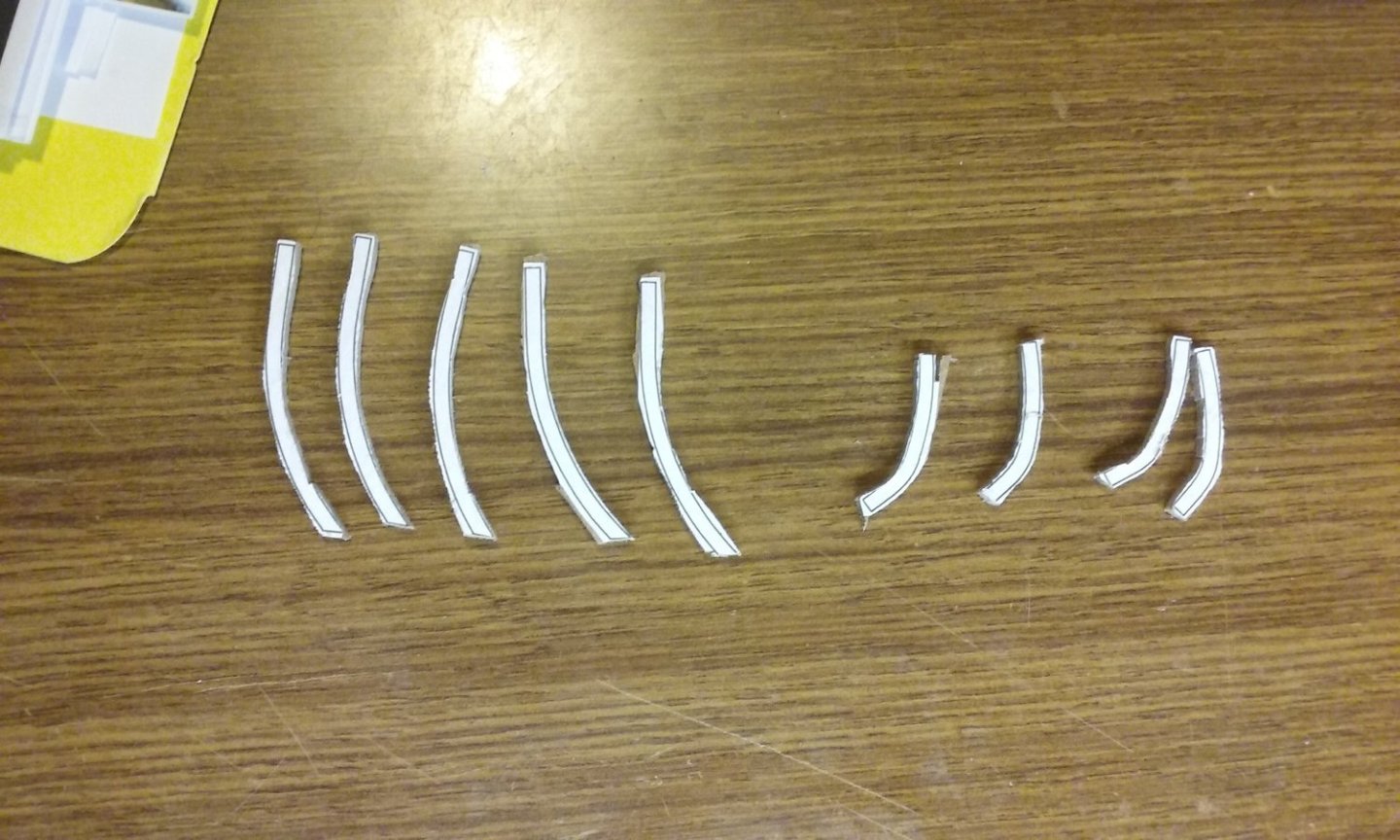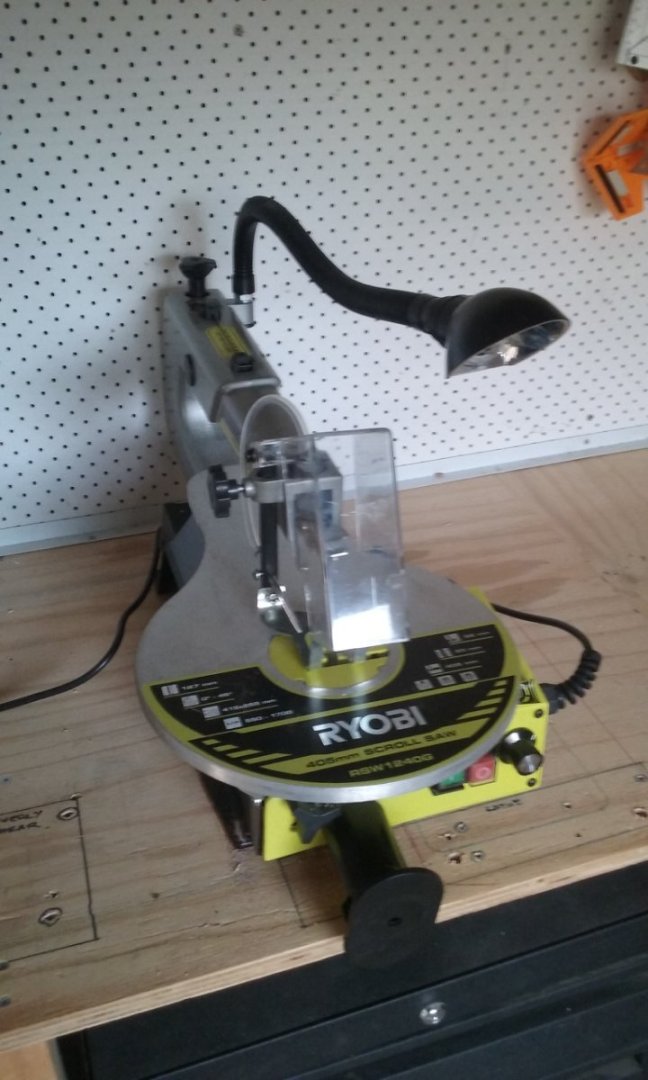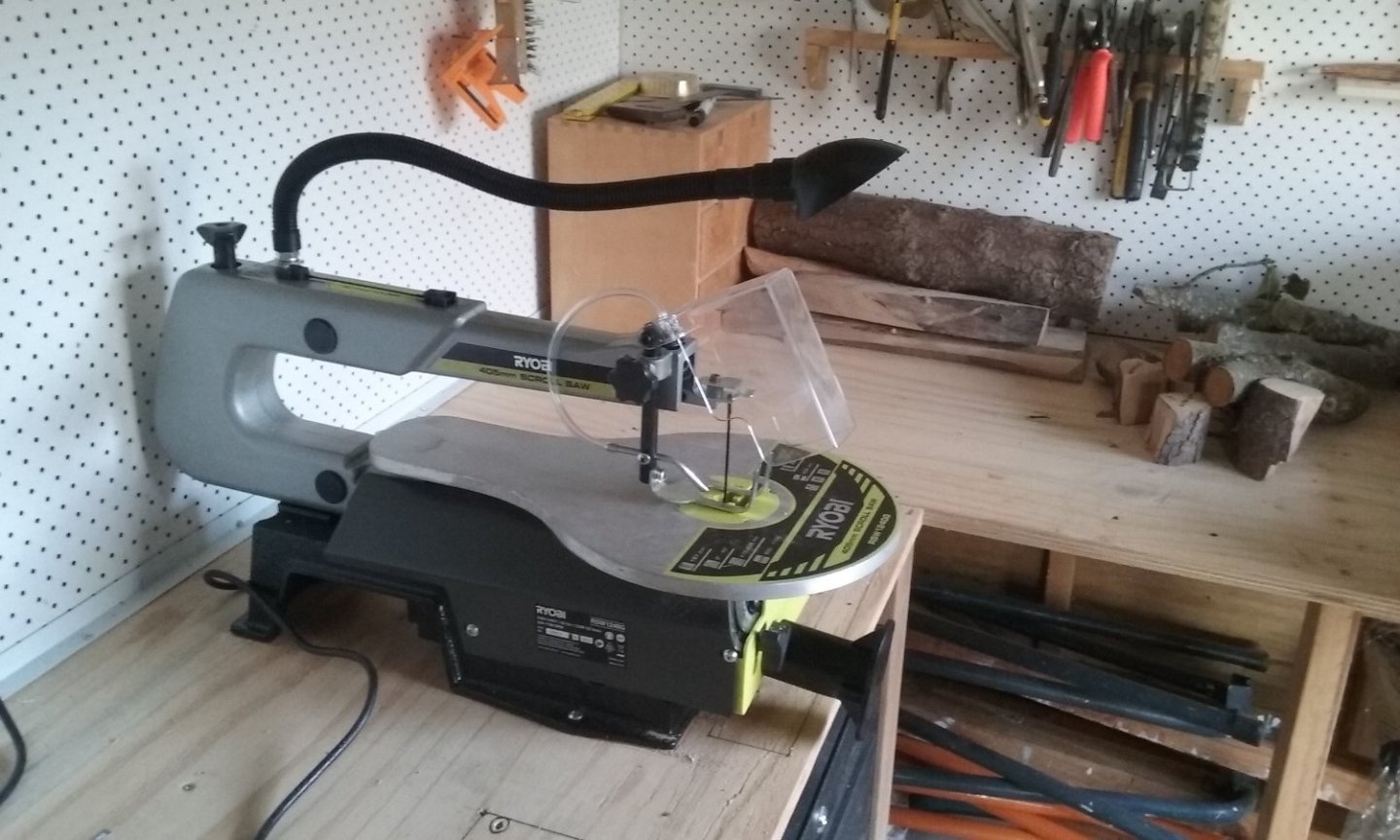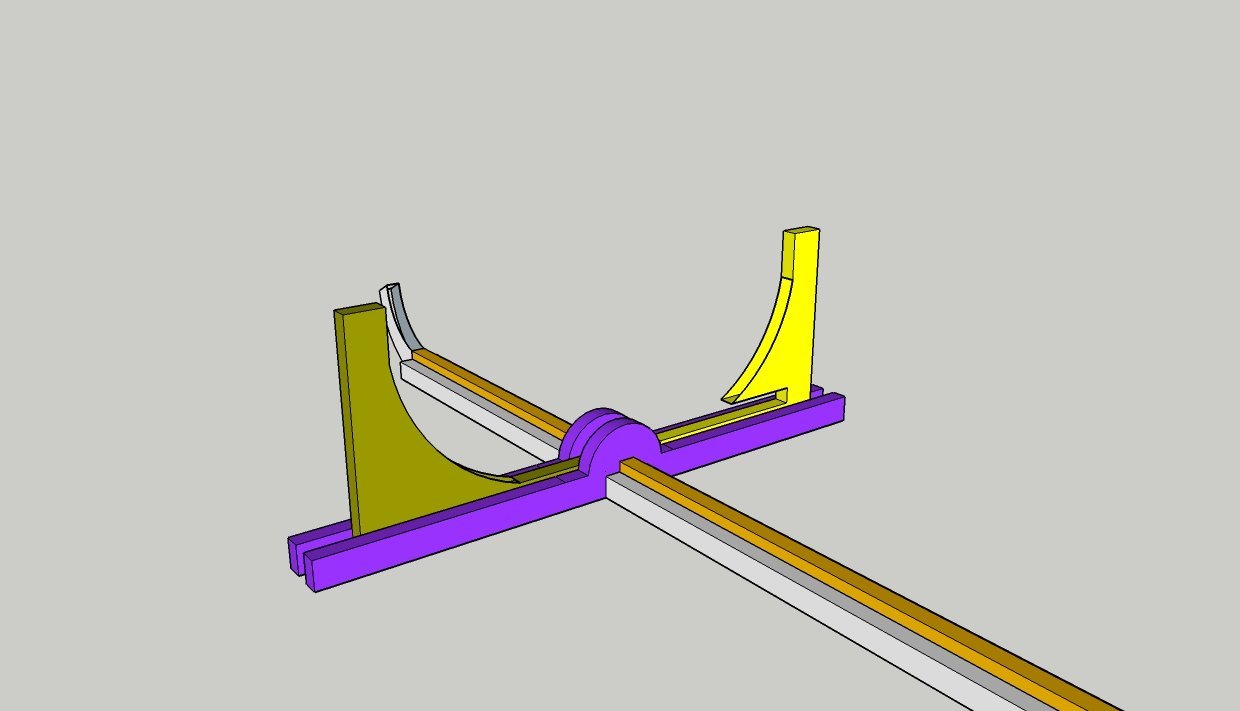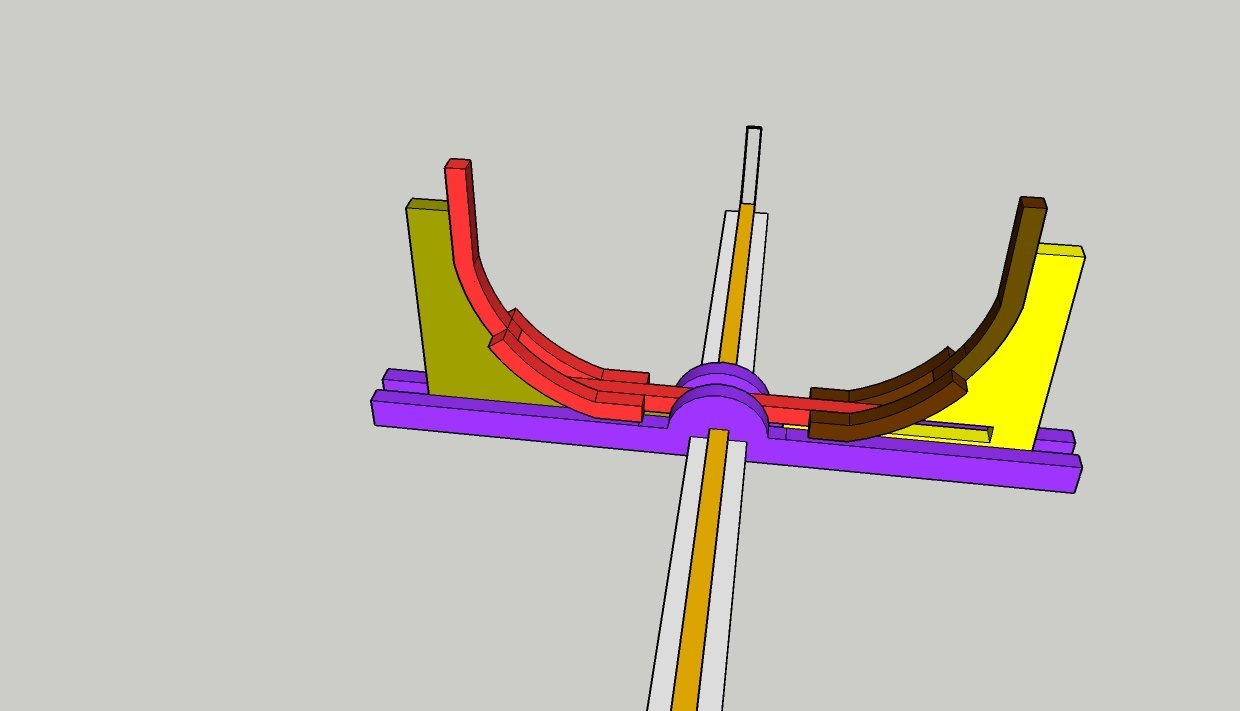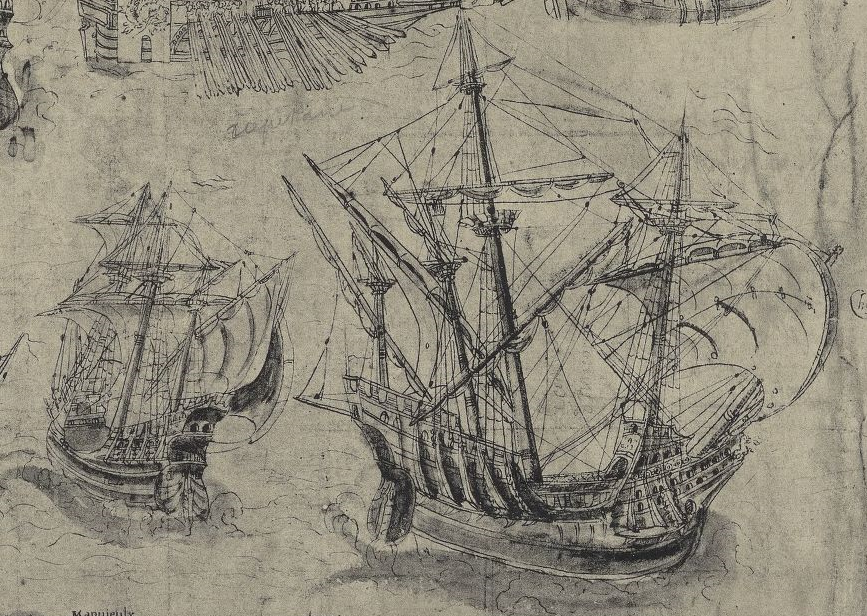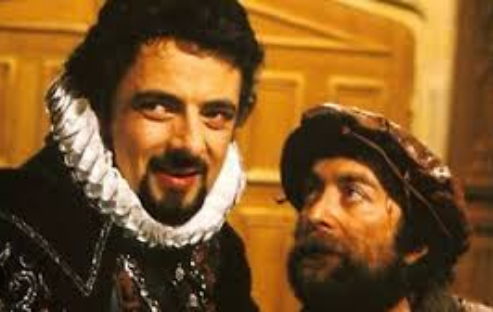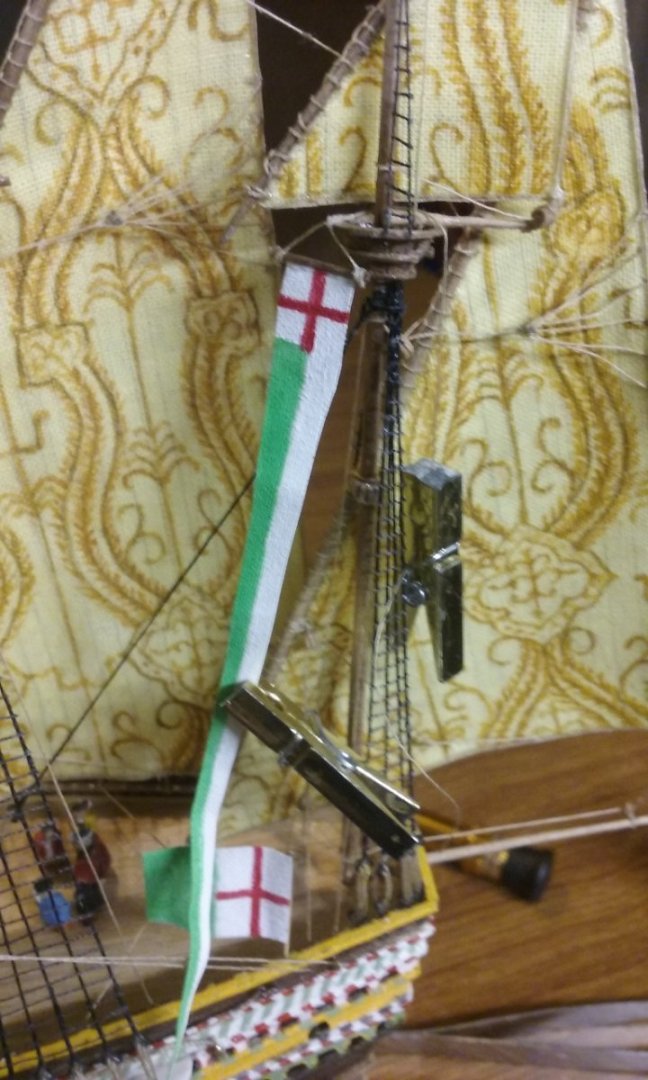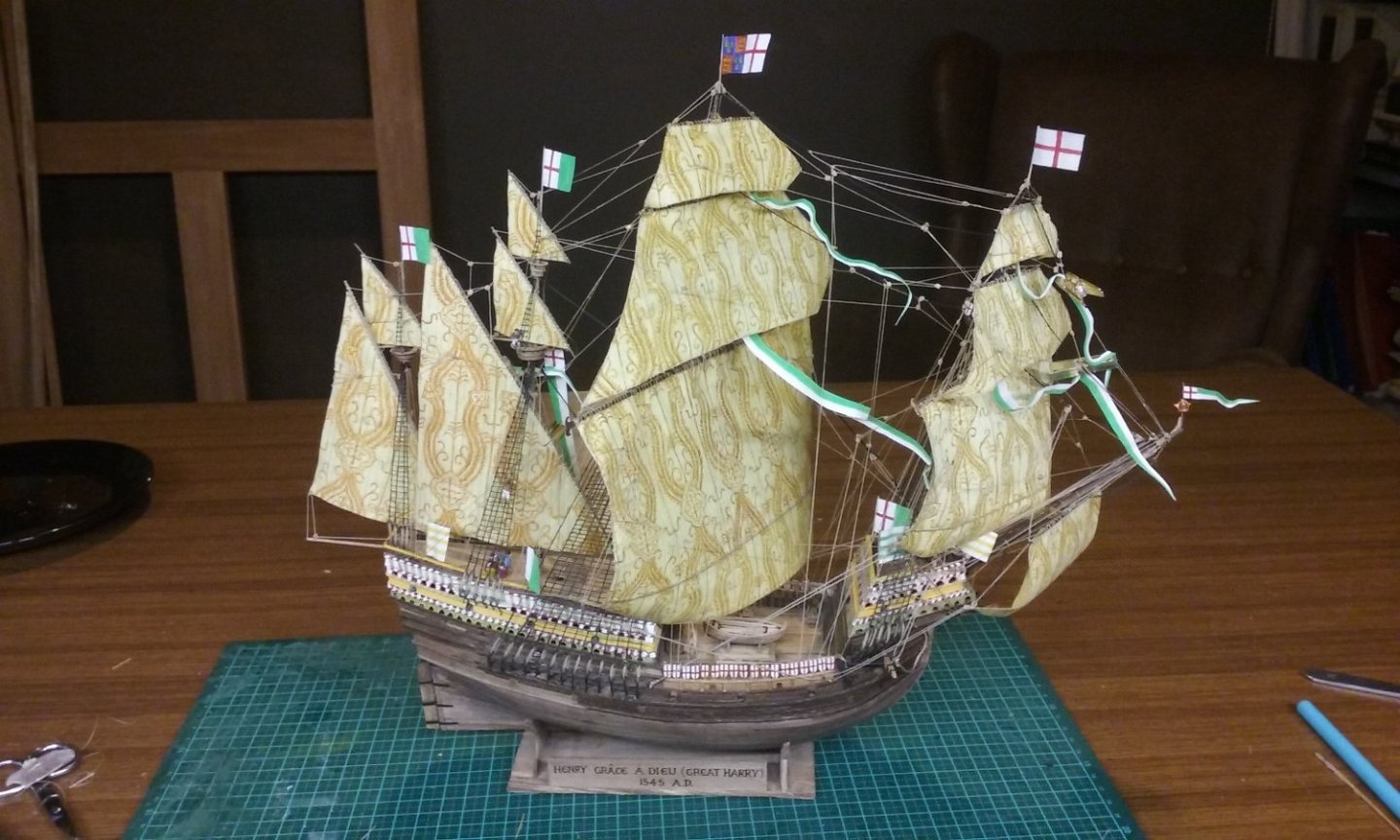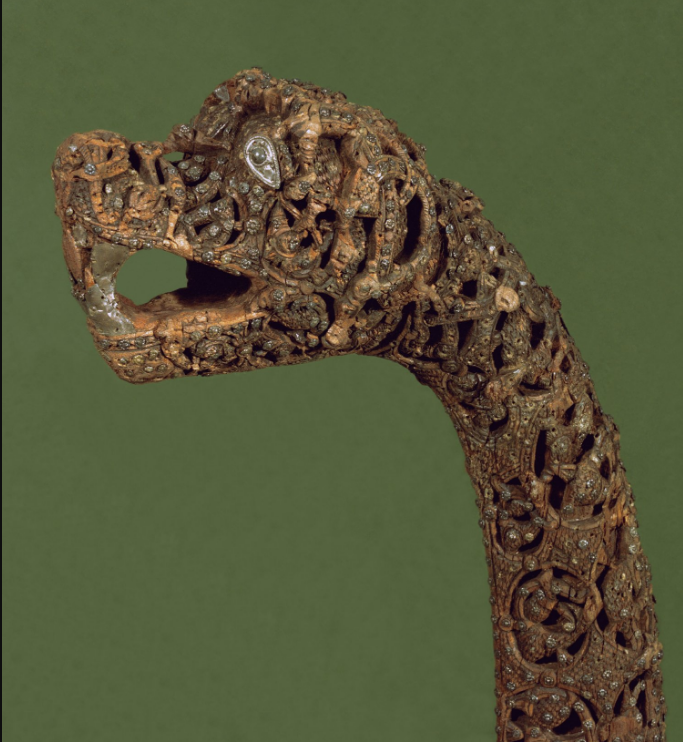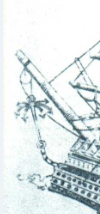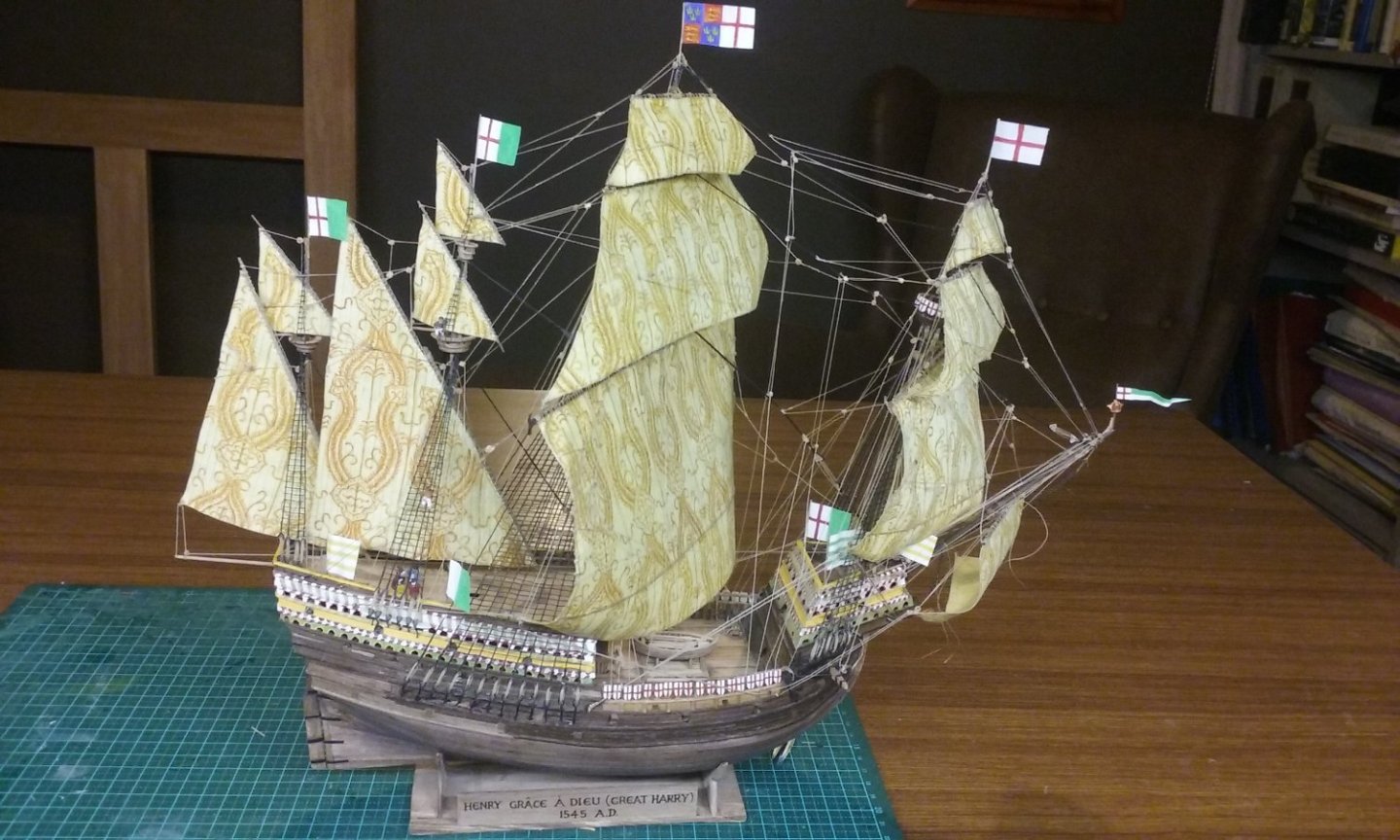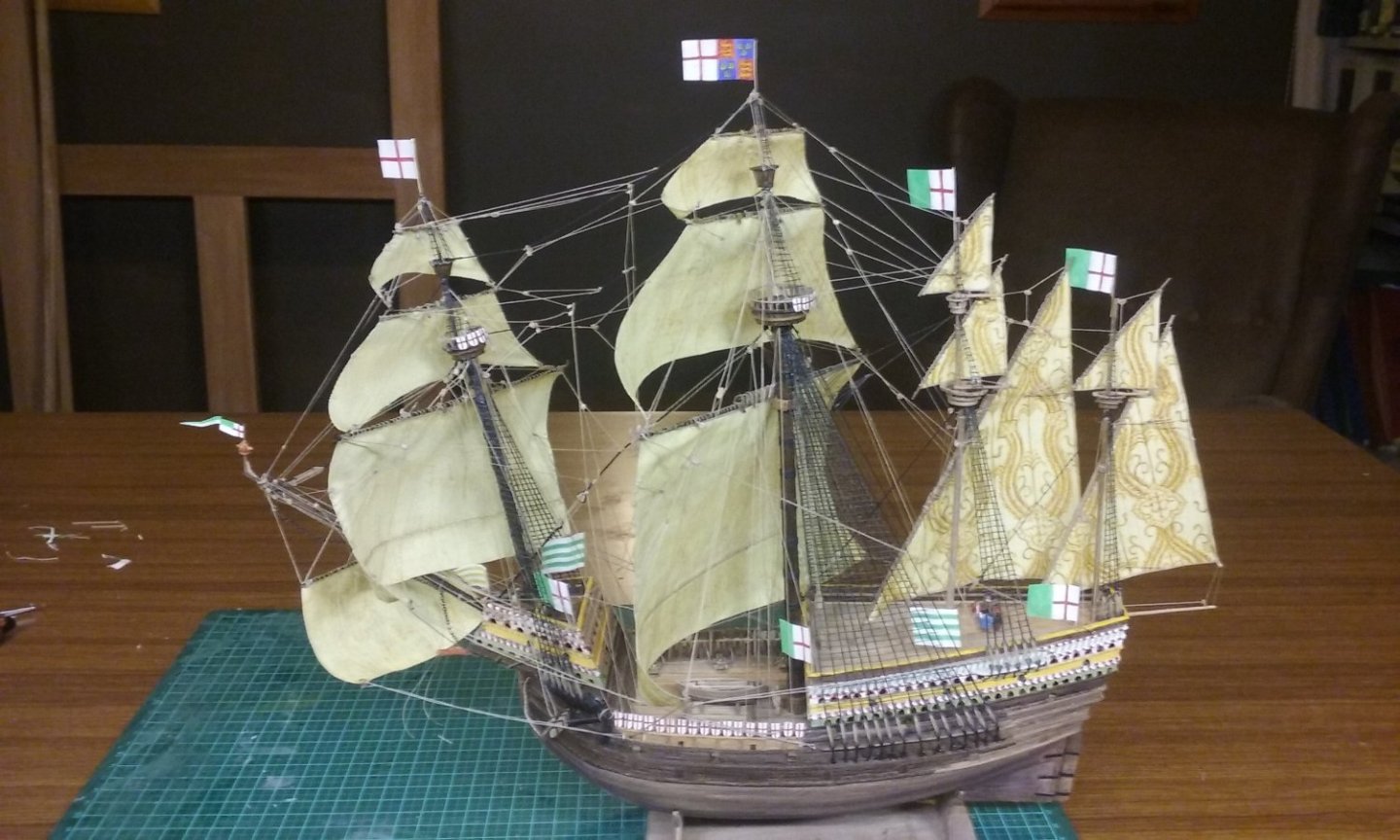-
Posts
7,986 -
Joined
-
Last visited
Content Type
Profiles
Forums
Gallery
Events
Everything posted by Louie da fly
-
Thanks, Dick. That's what I'd thought I'd seen on your model, but I wasn't sure. I agree - it does seem a bit of a strange way to do things. Steven
- 508 replies
-

Roter Löwe 1597 by Ondras71
Louie da fly replied to Ondras71's topic in - Build logs for subjects built 1501 - 1750
Superb work. She's absolutely beautiful! The kind of precision and quality I aspire to but don't achieve (so far). Steven -
Dick, I was just checking your Venetian Round Ship build log (which I'm shamelessly copying) - there's no specific mention of adding the mast steps, but it seems to me that you used a rectangular piece of wood each side of the keelson plus "blocking pieces" between these to make a slot for the bottom of the mast. Am I correct in thinking this? Best wishes, Steven
- 508 replies
-
Dick, You had to post this just after I cut the keel, didn't you? Like the Famous Eccles shouting 'Ahoy! Land Ahead!' CRASH - (I should have said that sooner, shouldn't I?) (Actually, it's ok - I've only cut it roughly to shape - I still have to trim it and I'm pretty sure I have enough leeway to get a catenary curve into it.) Steven
- 508 replies
-
That's coming together well. What are your plans for repairing the masts? Steven
- 6 replies
-
- Statenjacht
- Billing Boats
-
(and 1 more)
Tagged with:
-
It's like Captain Cook's axe - same axe he used, but the shaft has been replaced 50 times, the head has been replaced ten times.
-
Nice work, mate! You're making good progress. Steven
- 75 replies
-
- Oseberg
- Billing Boats
-
(and 1 more)
Tagged with:
-
That's very interesting speculation regarding the deadeyes. I'll be fascinated to see it in practice. One thing about the higher castles is, of course, that earlier practice had been to attack by boarding, having softened up the opposition with missiles - but only anti-personnel weapons (such as the swivel guns you see on late 15th century vessels). We're just getting into heavier ship-killing guns, and naval tactics were still governed by the old mind-set. Naturally the higher the castle, the easier it was to board the enemy and more difficult for him to board you. And you could also shoot down on him from a higher castle. By 1536 big guns in gun-ports were fully accepted, so having a high castle was a bit pointless (apart from being dangerous due to instability). Steven PS: Have you noticed that the larger galleon in the Normandy map above has a lateen topsail on the mizzen?
-
Yes indeed. The guys on board are probably mostly passengers, as they are dressed as landsknechts (mercenary soldiers) - lansquenets in French. Here's some more information on the picture itself - https://sammlung.staedelmuseum.de/en/work/ship-with-revelling-sailors . Holbein was a superb artist. Interesting about the deadeye shape. Have you seen the deadeyes they fished up from the wreck of the Mary Rose? They're in McElvogue's book Tudor Warship Mary Rose. Here's a sample I only found out bout these after I'd committed myself with the deadeyes on my own Great Harry. And anyway, at the scale I was working in they would have been impossible. Steven
-
Beautiful work, mate. She's looking good. Steven
- 536 replies
-
- Quadrireme
- radio
-
(and 1 more)
Tagged with:
-
Thanks for the advice and information, Dick. Interestingly, on my dromon I installed every second frame then filled in the gaps, but that was because of structural problems fitting all those frames in at once with the way I was building the dromon. I've certainly taken into account the need for spacers. I'd been intending to put in the master frame first and then progressively move forward and backward, frame by frame, but I'll look at the method you suggested. I can see the advantages - particularly in avoiding additive errors in maintaining trueness. And yes, I hadn't thought about the mast steps. Thanks for that. Finally, I do have a disc sander, but given how small the frames are, I might be better just using a file to bring them to shape. I'm still in the experimental stage - working out how the frames fit together (or even if they do) and whether my jig pictured above will really work. Steven
- 508 replies
-
I finally got to use my Birthday Present - My Precious. (We gots it on Our birthday, Precious). And I made sawdust! I hope to get more exact with my sawing, but I'm pretty happy with my first attempt. And I can always smooth the cut pieces down to shape. I'm currently designing a couple of jigs - one to assemble the frames from the futtocks and another to put the completed frames onto the keel. The first one will blatantly steal the idea from Woodrat's 14th century Venetian Round Ship build log. Here's the second jig, drawn on Sketchup. The keel and its supports are the white and yellow bits running across the drawing. The two yellowish pieces with the curved cut-outs are for the frames to rest against - they slide in and out between the purple guides (to allow for the narrower frames as we go fore and aft from the master frame). And the Pink and brown things are the two halves of an assembled master frame. More anon. Steven Steven
- 508 replies
-
You might like to refer to my own HGaD build for the rigging configuration - not necessarily to follow it exactly, but to see the decisions I was faced with when the best text I could find (Anderson's The Rigging of Ships in the Days of the Spritsail Topmast) starts over 50 years later than the Great Harry, so I had to extrapolate backwards and hope I'd got it right. There's also the Anthony Roll and The Embarkation at Dover to refer to for rigging, as well as a few contemporary pictures of galleons, which, though a different kind of vessel, often date back to 1545, such as the ones below. 1545 - from a map of Normandy by Jean Jolivet - there are another 3 pics from this series if you're interested. outgoing-ship Holbein 1532-3 Have fun with it. Steven
-
- 142 replies
-
Ringerike style - http://viking.archeurope.com/art/viking-art-styles/ringerike/ - a particular characteristic of the style is big single animal figures. Jellinge style - http://viking.archeurope.com/art/viking-art-styles/ringerike/ - interlaced animals are one of the main features. Steven
-
Adding the pennants. I had to revise the pennants - the "staffs" were made of bits of a weed growing across the road - circular section, beautifully thin - ready-made staffs! Unfortunately the glue wouldn't stick to them (I think they have a waxy surface), so right in the middle of things the pennant would come adrift from its staff. So I made replacements out of wood. Much more work, but the glue stuck to them. I glued a bit of cotton to each fighting top, then put a short loop of cotton from one end of the "flagstaff" to the other. Then soaked the loop with a weak mix of PVA (white) glue and water., and hung the loop from the aforementioned bit of cotton attached to the fighting top and added weights, so the loop became a triangular shape. Then I scrunched up the pennant so it looked like the wind was blowing it, and added a dab of PVA glue wherever the pennant crossed the rigging, to keep it in place (otherwise gravity would take over and it would hang unnaturally). The one below had to be clamped as well - it kept sagging off the rigging. By the way, no captain in his right mind would have these huge things flapping around while the ship was under way. They'd get in the way horribly, and could even knock sailors off the rigging. Antepenultimate* pennant added: And - FINISHED! 20230520_121919.mp4 Steven *Third last.
- 740 replies
-
- Tudor
- restoration
-
(and 4 more)
Tagged with:
-
I'd agree with Chuck about the timber. If you can't get boxwood, try for one of the fruit woods - apple, cherry - I use pearwood (from the neighbour's tree) and have found that if you pick a fine-grained piece (some of them aren't - they've grown too quickly) they carve very nicely. Apricot's good too. I've not seen your completed shields before. They look very good. Nice work. The figurehead you've chosen is one of the more attractive ones in existence - though it's not from a ship (IIRC it's from a bed-end or something - or perhaps from the frame of a tent). But then NO Viking ships' figureheads have ever been found, so we have to work with what we've got. Just be glad you're not trying to copy the dragon head carved by the unknown Viking woodcarver referred to as the Academician . Steven
-
That was my thought. But it was developed at a time when there was no spritsail, and I think they'd have had to make adjustments to allow for the new sail. Certainly it would be sensible to not only furl but also to physically remove the sail and yard so as not to obstruct the chain. I know Woodrat disagrees with me, but I believe it was to hold ships together for boarding. I think my main change of mind came from an incident in the battle between the Shannon and the Chesapeake, when one English sailor was tying the ships' yards together to facilitate boarding until an American cut his arm off. The grapnel in my view is too light to hold the weight of the ship, and this one, for instance, has too many "flukes" (arms? hooks?) to work as an anchor. Steven
- 740 replies
-
- Tudor
- restoration
-
(and 4 more)
Tagged with:
-
A-a-a-nd the flags are on. A bit of a problem where the sails got in the way (particularly the forecourse), but I figured the wind bouncing off the sail would make the flags go the other way, so all good. Just the pennants to add, now. Steven
- 740 replies
-
- Tudor
- restoration
-
(and 4 more)
Tagged with:
-
Getting very close, Bob. A vessel to be proud of. Is it too early to ask what you plan to make next? Steven
- 56 replies
-
- Sea of Galilee Boat
- SE Miller
-
(and 1 more)
Tagged with:
About us
Modelshipworld - Advancing Ship Modeling through Research
SSL Secured
Your security is important for us so this Website is SSL-Secured
NRG Mailing Address
Nautical Research Guild
237 South Lincoln Street
Westmont IL, 60559-1917
Model Ship World ® and the MSW logo are Registered Trademarks, and belong to the Nautical Research Guild (United States Patent and Trademark Office: No. 6,929,264 & No. 6,929,274, registered Dec. 20, 2022)
Helpful Links
About the NRG
If you enjoy building ship models that are historically accurate as well as beautiful, then The Nautical Research Guild (NRG) is just right for you.
The Guild is a non-profit educational organization whose mission is to “Advance Ship Modeling Through Research”. We provide support to our members in their efforts to raise the quality of their model ships.
The Nautical Research Guild has published our world-renowned quarterly magazine, The Nautical Research Journal, since 1955. The pages of the Journal are full of articles by accomplished ship modelers who show you how they create those exquisite details on their models, and by maritime historians who show you the correct details to build. The Journal is available in both print and digital editions. Go to the NRG web site (www.thenrg.org) to download a complimentary digital copy of the Journal. The NRG also publishes plan sets, books and compilations of back issues of the Journal and the former Ships in Scale and Model Ship Builder magazines.




